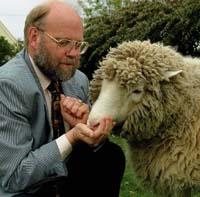Ten years after Dolly's birth

Ten years ago they announced the birth of the Dolly sheep. He was born in July 1996 at the Roslin Institute in Scotland, but was not released until 27 February 1997: The article was published in the journal Nature and on the cover appears the image of the lamb Dolly.
Dolly became an example of cloning. It was the first time that cloning was successfully performed from the cells of an adult mammal (they replaced the genetic material of an egg with that of a reproductive cell). And if so, many thought that human cloning could be achieved overnight. Therefore, most countries drafted contrary laws.
But Dolly's success was such, because he had health problems and died at the age of seven in 2003. Dolly aged prematurely. Thus, the main limitations of cloning were revealed: in addition to many attempts (Dolly, in 277 sessions at birth), clones were aged early.
Consequently, the feasibility of cloning was questioned and they realized that human cloning was more difficult than expected. Ten years later, the man we know has not yet been cloned. However, more than one has claimed the merit of this feat for himself, remember the fraud of Korean Hwang Woo-Suk.
However, today the great ethical debate is not human cloning whether or not. The issue has not been clarified, but the debate has evolved and oral issues are therapeutic cloning (cloning with therapeutic purpose) and the pleasant cell.





